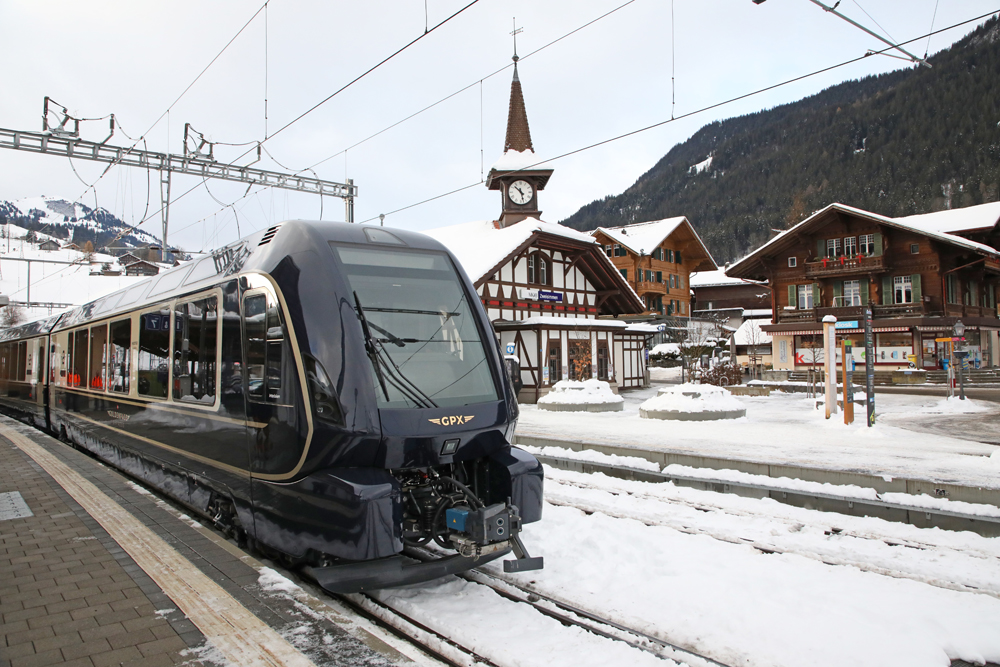
INTERLAKEN, Switzerland — A concept the Swiss rail industry (and its passengers) has dreamed of for years became reality in mid-December with the debut of through trains from Montreux on Lake Geneva to Interlaken in the heart of the Alps.
No new rail lines were needed but some modern railway technology was.
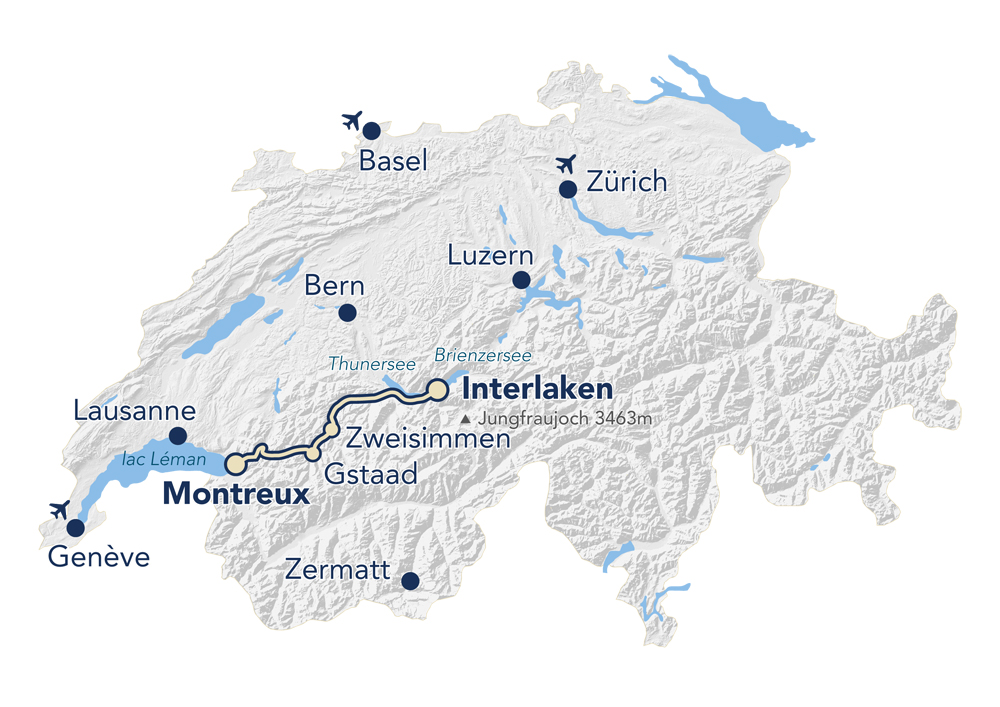
The route includes a 39-mile meter-gauge line out of Montreaux operated by Montreux Berner Oberland Bahn, or MOB, and a 33-mile standard-gauge route out of Interlaken run by Switzerland’s second-largest mainline rail company, BLS (formerly the Bern–Lötschberg–Simplon Railway but now just known by its initials). The track gauges haven’t changed, but to make the through running possible, the equipment has: 23 new Golden Pass Express, or GPX, push-pull cars built by Swiss firm Stadler operate on variable-gauge trucks.
A gauge-changer system built at the station at Zweisimmen, where the two track gauges meet, adjusts the specially designed trucks made by Alstom in Switzerland.
The new trains have cost about $95 million, funded in part by Switzerland’s national rail infrastructure fund and in part by the train companies. Not all the new cars are in service yet; the last few will be finished in 2023.
A complex system
The operation is complex. Automatic gauge changes have been done elsewhere, but the difference here is the largest ever undertaken, going from 1000 millimeters to 1435mm, a difference of 435mm or 17.126 inches. In Spain, there are trains that switch from 1435 to 1668mm, a difference of 233mm or 9.17 inches, while some trains in Japan adjust from 1435mm to 1067mm.
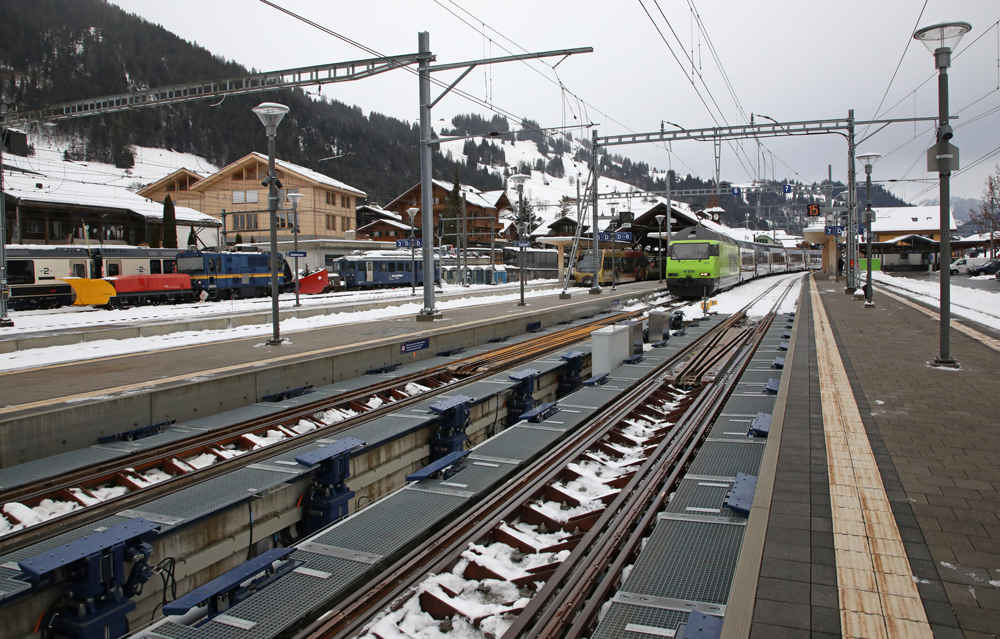
The locomotives involved cannot change gauge so must pass through when it is set for their width. In practice, the gauge change is always accomplished when the cars are being pushed or pulled by the MOB meter-gauge locomotive.
Trains arriving on the standard gauge stop short of the gauge changer, where the BLS locomotive is removed along with a special car used to connect it to the push-pull GPX cars. The MOB meter gauge locomotive couples up at the back, pushes the whole train through the gauge changer, and continues on to Montreux. The opposite applies for trains going to Interlaken. They arrive through the gauge changer hauled by the MOB loco, where the technology allows the meter gauge loco to go through before changing all the other axles from meter to standard gauge. Once the MOB loco is removed, the cars — now standard gauge again — get the BLS loco and its special car attached at the rear, which then push the train to Interlaken.
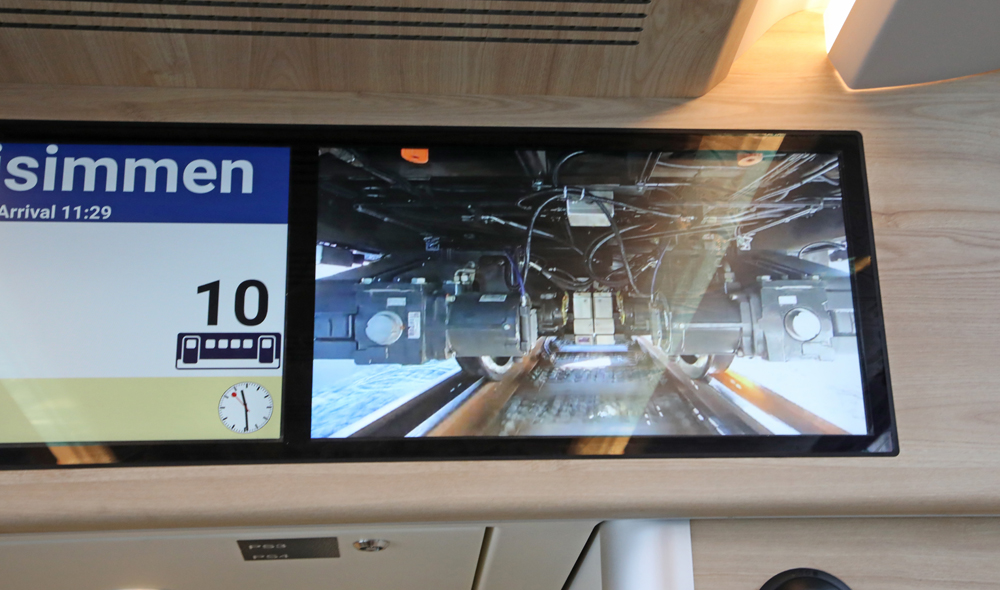
While the gauge change is obvious, and announced onboard — with a video of the wheelsets being changed played in the cars as it happens —this is not the only change involved. The BLS standard gauge system uses Switzerland’s standard 15 kV AC overhead power, but the MOB metre gauge uses the less routine 900 Volts DC. This means that the voltage in the overhead wires has to be physically changed each time to allow the necessary locomotive movements loco at Zweisimmen.
The final technical complication to be overcome was the fact station platforms are about 8 inches, or 200mm, higher on the standard-gauge line than on the meter-gauge portion of the route. The gauge-changing process also physically lifts or drops the cars to the correct height. Retractable electric steps help bridge the gap to the platform for passengers. Low-floor cars suitable for use by those in wheelchairs etc are being built and will be the last cars to be introduced.
One less train change on Golden Pass route
The line where the new trains run has been promoted as part of the Golden Pass route for many years. This route takes passengers from Luzern via the meter gauge, cog-wheel- (rack-) equipped, route over the Brünig Pass to Interlaken, where they transfer to trains via Zweisimmen to Montreux. The spectacular mountain and lake scenery has been attracting visitors for well over a century, while the rail trip has required two changes of trains since 1916.
Once the frequency of the Golden Pass Express trains ramps up to four each way daily, which is scheduled for June, it will be possible to make the trip with just one change, at Interlaken. Running the entire route using gauge-changing equipment has been considered, but would require new or modified cars for cog-wheel operation over the Brünig Pass section.
New trains offer three-class service
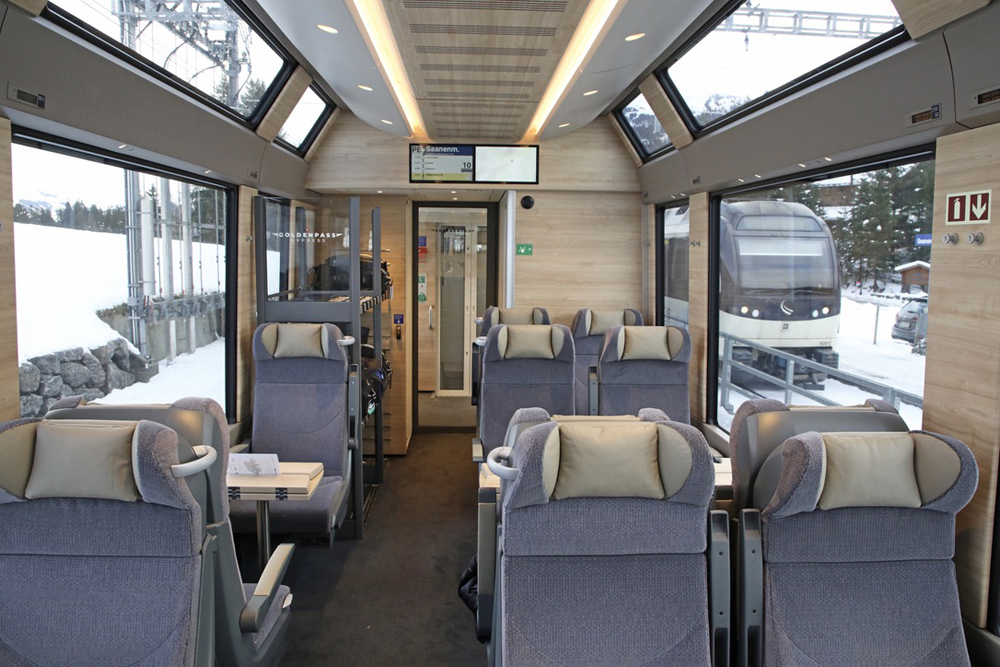
The new trains are clearly aimed at Switzerland’s massive international tourist market. A “cow bell” chime, as found round the necks of most Swiss cows but seemingly nowhere else in the world, is used to precede all onboard announcements. (As usual for Switzerland, these announcements are in multiple languages, including English.) But this is no tourist-only train, although a lot of tourists are already using it. It’s part of the local transport system, with residents using it for trips from one town to another.
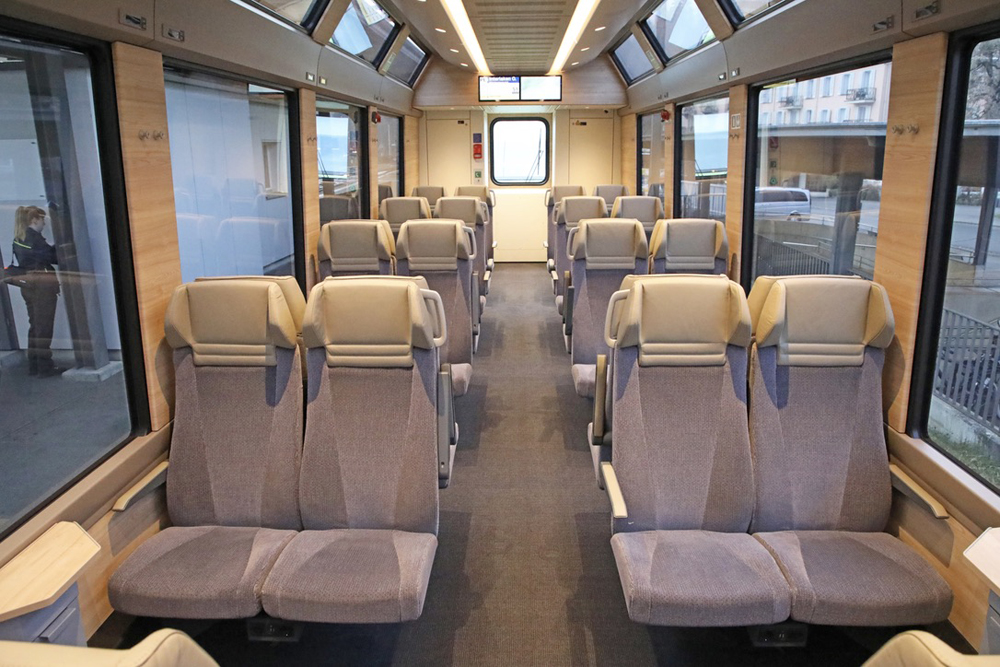
There are three classes of onboard accommodations. Second Class is modern two-plus-two seating, albeit like all the train with big picture windows. First Class has two-plus-one seating, while at either end of the train there is Prestige seating, which can be rotated, with plush leather seats and a view forward or back during the portion of the trip when no locomotive is immediately adjacent. (This will never be the case for the entire journey, irrespective of which end of the train is chosen.)
The Prestige seats are really just for tourists and need pre-booking with a special fare (currently 35 Swiss Francs, so around $37) charged on top of the First Class ticket price. In First and Second Class, reservations are not compulsory and rail passes like Eurail or the Swiss Pass are accepted, although anyone planning to make the trip as a highlight of a vacation should probably book their seats in advance.
There are several onboard catering options, with locally sourced food available to pre-order. There is also the option of buying drinks and snacks onboard.
The train has its own website in several languages; the English site is available here.
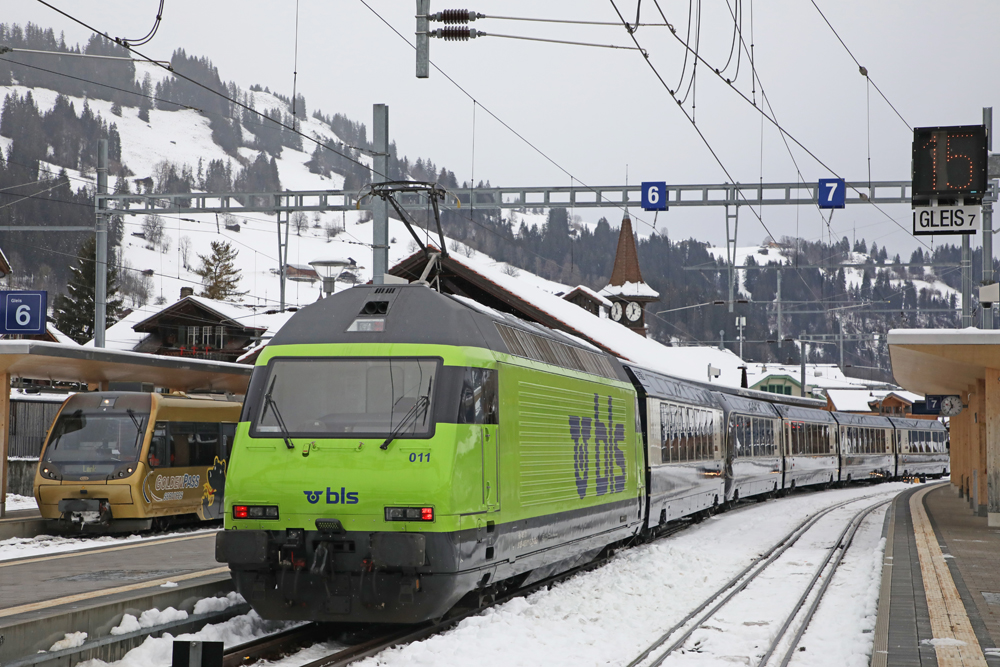







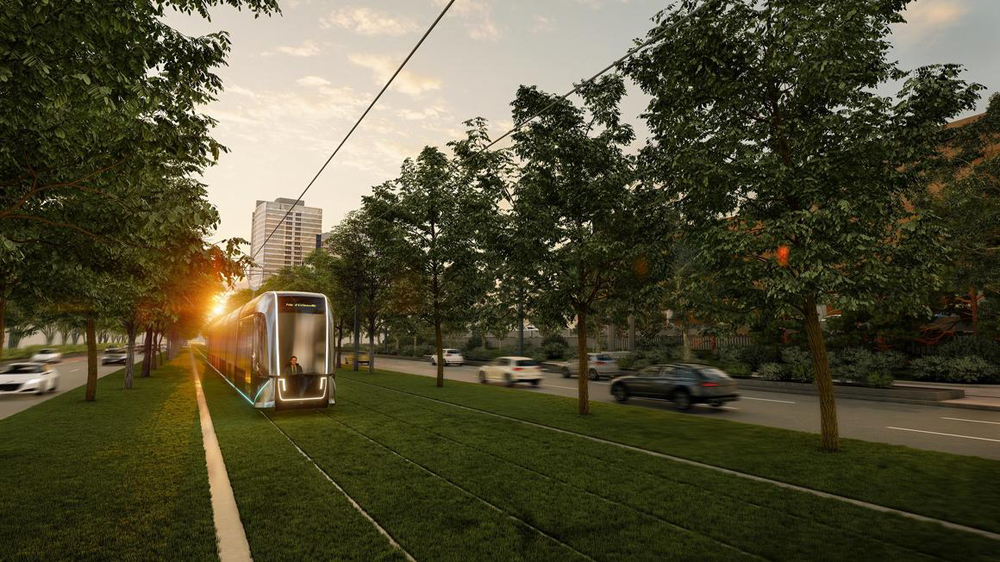
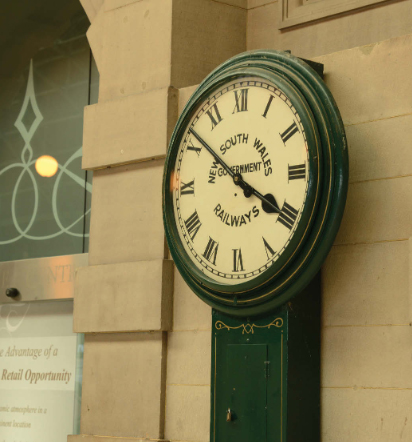
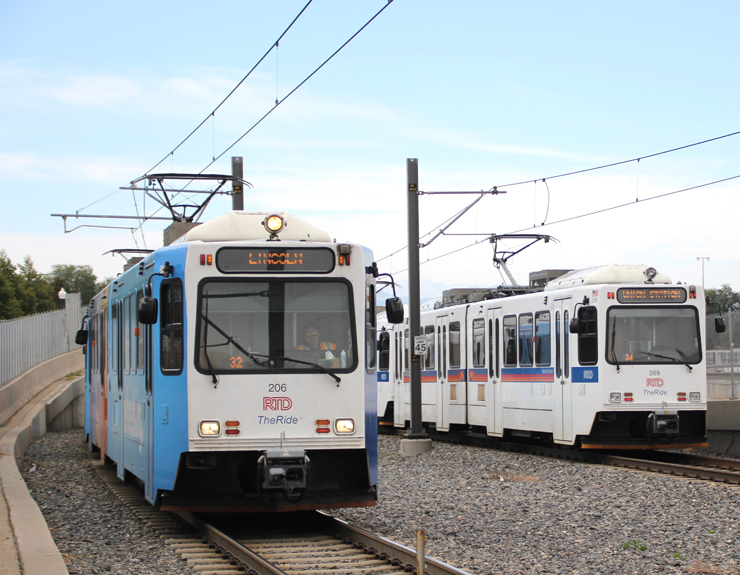




And we (METRORAIL at least ) can’t keep our wheels in one gauge.
Might have been cheaper to just standard gauge the entire route, with a lot less maintenance headaches.
Neat!
Much faster than using the Timber Transfer.
The Swiss show what can be done with innovation, and here we have PSR!
This is soooooo… coooooool! We rode the route on the Golden Pass equipment once and several times on regular trains. Like all Swiss trains, worth the journey.
Didn’t the Moscow-Berlin and Moscow-Nice trains use gauge changing Talgo equipment?
There is Talgo equipment that does that.
Yes but now that the Swiss are doing it it’s “fashionable.”
Moscow – Berlin used to be a Talgo in before Covid times.
Moscow – Nice & Moscow – Paris via Berlin used to have conventional sleepers involving a bogie change at Brest.